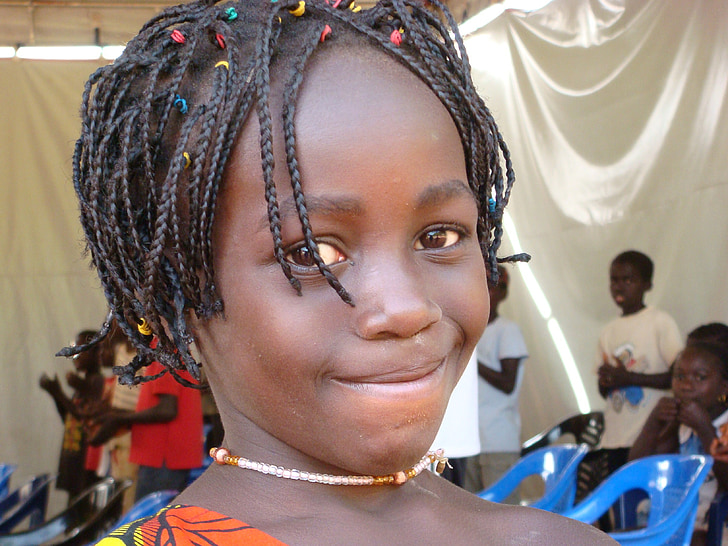I was lucky enough to live for a few years with my grandmother Miandabu Wa Kabwela, who had a vertical line from her forehead to her chin, with two horizontal dots under her left eye. How I regret that I did not learn from her what it meant! The only trace I have is the story about the migration of her people, the Luba, from Sudan to what is now Kasai in the center of the Democratic Republic of Congo. Years later I realized that tattoos, like hairstyles, were a kind of identity card. Everything has meaning, whether it is passed down in oral or written form, so let’s interrogate the past on this topic that conditions the present and the future.
Origins
The great Nigerian photographer Auger Kere and the Egyptologist, writer and specialist in African mathematics Nioussérê Kalala Omotunde, originally from Guadeloupe, have worked extensively in this regard. The Anyjart Institute of African History, which he founded, with branches in Guadeloupe, Canada, Guyana, Martinique and Haiti, among others, aims to recover Africa’s cultural, spiritual and intellectual heritage. Omotunde showed the links between the wigs of the kings of the Great Lakes, known as Mwami, and those of the Egyptian pharaohs both men and women, although later patterns evolved by adding other materials.
From Nubia to Egypt many depictions show Ausare and Asata (Osiris and Isis) with coal-black complexions, one of the ancient models of beauty. Indeed, we cannot separate hairstyles from skin color, which had to be protected from the great heat of many parts of the continent. Paintings from various temples also show hairstyles of dreadlocks in the style of dreadlocks.
Tattooed Egyptian mummies dating back 5,000 years have been discovered. In Egypt and North Africa, tattoos were considered a cure for disease, protection against evil spirits and, in the case of women, a symbol of fertility. They were also used to show membership in a certain tribe. In general, African tattoos display beautiful designs and symbols still used today.

Ancient combs
As confirmed by archaeological discoveries, the kamita comb played an important role in hair care for men and women; all sported various hairstyles, always accompanied by tattoos. Women then added beads and other ornaments, which also served to recognize princesses, princes, judges, etc., that is, a person’s rank. Making elaborate hairstyles took hours of work, sometimes even whole days. The person who braided the hair performed a service for the community without asking for anything in return and was considered a wise figure worthy of respect. It was a ritual gesture, an art form passed down from older women to the next generation.
Hair was also believed to have spiritual significance and to be endowed with great powers. Given their position at the highest part of the body, hairs constituted the conduit used by deities and spirits to reach the soul.
Hair and symbols
Today many African men totally shave their hair, but in the past this was associated with mourning. In contrast, white frizzy hair was a symbol of wisdom and experience.
French Afro-descendant historian and sociologist Juliette Sméralda has addressed the problems associated with hair straightening among African and Afro-Caribbean peoples as a form of discrimination and alienation from their past and as a legacy of slavery and colonialism. Over time, beauty standards associated with skin color have been lost, replaced by products to whiten dark complexions and straighten frizzy hair.
Ancient patterns return
Fortunately, singers such as Miriam Makeba, Nina Simone, and many others, as well as activists such as Angela Davis, have preserved these patterns, claiming the fact that “Afro” hair is not just a fashion, but a way of reclaiming an identity that has been erased and denigrated over the centuries. Thanks to their influence, more and more young people in Africa and the West are returning to this style as a source of pride and unity beyond the Kamite continent.







